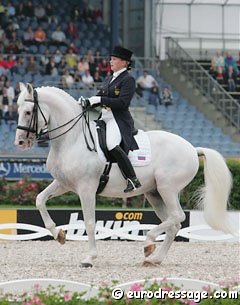
Piaffe according to the FEI rules “is a highly collected, cadenced, elevated diagonal movement giving the impression of remaining in place. The horse’s back is supple and elastic. The hindquarters are lowered; the haunches with active hocks are well engaged, giving great freedom, ightness and mobility to the shoulders and forehand. Each diagonal pair of legs is raised and returned to the ground alternately, with spring and an even cadence.”
It’s interesting if we read this and then watch a horse and rider performing piaffe keeping the above in mind. Then if we break it down into parts and ask if the piaffe we are watching ticks off each of the desired requirements.
Yes, piaffe is difficult. I have spent the last few months attempting to slowly establish the piaffe on my own horse Batialo. In the beginning I wanted to know what was the best way to teach a horse piaffe. Of course like many things, there is no best way, because the best way for one horse is not the best way for another.
My mum’s Lusitano is one that has the tendency to vibrate naturally. The sort of horse that “jog jogs” when he is excited. The technique used to teach this horse piaffe focused on rewarding him whenever the steps were slow and clear. My Lusitano is not a horse that naturally vibrates. His rewards comes when he shows the desire to vibrate the steps, even if slightly above rhythm, because he will naturally slow the stride himself as is his tendency.
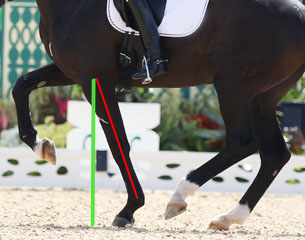 Here lies a common error. Vibrate does not mean what people may think it does. Many people mistake this with making the horse stressed, or agitated, in order that the horse move regardless of rhythm or awareness. We see horses piaffing chaotically with expressions of fear in the hope that this will somehow teach the horse to move.
Here lies a common error. Vibrate does not mean what people may think it does. Many people mistake this with making the horse stressed, or agitated, in order that the horse move regardless of rhythm or awareness. We see horses piaffing chaotically with expressions of fear in the hope that this will somehow teach the horse to move.
Quite the contrary. The single most important element of piaffe is that the horse remains calm before, during and after any piaffe steps. Should the horse show tension or stress the rider should move on with a different exercise completely and return to piaffe only when the horse has forgotten the tension.
The second thing to note is that the piaffe, according to FEI rules, should “give the impression of remaining in place” and this is actually stated twice in the piaffe guidelines.
Colonel Christian Carde, retired French I-judge and former chief rider of the Cadre Noir in Saumur, France, says that it is common in competition nowadays to see “at the high level, horses going forward in the piaffe."
I wondered what factors might be contributing to this and Christian pointed out that “the biggest change has been in the frame in which the horses are trained and in which they compete. They are now more short in the front and with a rather hard contact. This doesn't allow for the perfect balance which permits the easy piaffe on the spot. For this reason none of the horses at the highest level are giving the 15 piaffe strides on the spot," Colonel Carde summarized.
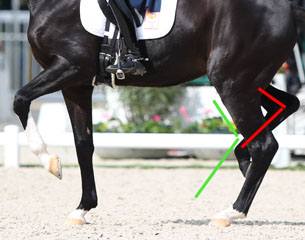 Carde added that in the defence of the rider we must say that the FEI doesn't help. “It is said in the regulation that "while giving the impression of remaining in place, there may be a visible inclination to advance".
Carde added that in the defence of the rider we must say that the FEI doesn't help. “It is said in the regulation that "while giving the impression of remaining in place, there may be a visible inclination to advance".
Moreover 5* judge Ghislain Fouarge, FEI's First Judge General, wrote in his directive regarding the judging of the piaffe that going more than one meter the horse cannot get a mark higher than a 5. This is completely contradictory with the " perfect balance" which is suppose to be achieved..
Carde stressed that according to the FEI rules there should be a moment of suspension in piaffe, citing the FEI regulation that “each diagonal pair of legs is raised and returned to the ground alternately, with spring and an even cadence."
Noting that the piaffe today is showing more bounce or activity, Carde explained that this was always required but nowadays the horses are much better than 30 years ago. “In particular regarding the balance and the strength, and it is thus easier for these horses to give the bounce in the piaffe."
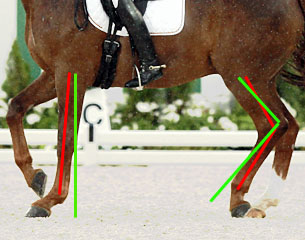 However, lately we also see a tendency for the back of the horse to bounce and the front to lower and I wondered if that was a result of poor training, or if it had to do more with conformation? “If the piaffe is given with the horse on the shoulders and not in balance, we cannot speak of proper collection," said Carde. "The tendency to force the horse into collection by a hard contact leads to such results like you describe above. Regarding collection, I can say that there are conformations which are more helpful than others and so according to the breeding, horses are more or less talented for the "classical piaffe". Thus the horses from Northern Europe, like German or Dutch, that we mainly see in the competitions, are more predisposed in bounce but less in elevation of the legs. On the contrary the Iberian are less talented in bounce, but better in elevation and producing a piaffe on the spot."
However, lately we also see a tendency for the back of the horse to bounce and the front to lower and I wondered if that was a result of poor training, or if it had to do more with conformation? “If the piaffe is given with the horse on the shoulders and not in balance, we cannot speak of proper collection," said Carde. "The tendency to force the horse into collection by a hard contact leads to such results like you describe above. Regarding collection, I can say that there are conformations which are more helpful than others and so according to the breeding, horses are more or less talented for the "classical piaffe". Thus the horses from Northern Europe, like German or Dutch, that we mainly see in the competitions, are more predisposed in bounce but less in elevation of the legs. On the contrary the Iberian are less talented in bounce, but better in elevation and producing a piaffe on the spot."
Knowing that there are many ways to teach the piaffe, the colonel explained he prefers to teach the piaffe in hand, going a bit forward at the walk, and collecting the horse more and more until he gets a diagonal stride.
I also read that the horse should first achieve balance and rhythm, before adding activity. Carde refuted this: “no, it should be that balance, rhythm and activity must be permanently combined”.
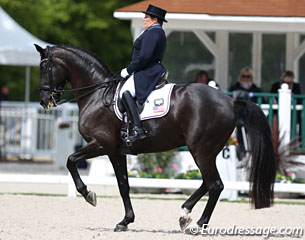 Overall, the Colonel stressed that allowing horses to go forward in the piaffe is acting against good equitation. "If the ambition of competitive dressage is to preserve the equestrian art we should see slow elevated piaffe strides on the spot in the arenas and an easy progressive transition from piaffe to passage, which is not the case nowadays.”
Overall, the Colonel stressed that allowing horses to go forward in the piaffe is acting against good equitation. "If the ambition of competitive dressage is to preserve the equestrian art we should see slow elevated piaffe strides on the spot in the arenas and an easy progressive transition from piaffe to passage, which is not the case nowadays.”
Carde strongly believes and knows that this will only be possible if horses are ridden (again) with the poll as the highest point and with a soft contact ....as it is required in the FEI regulation but unfortunately not put into practice. “It is a judging problem," Carde firmly stated.
In summation, Carde told me that it is the conformation of the horse that in a large part sets the ground work to achieve the classical piaffe.
“The talent of the rider does the rest,” he added.
by Sarah Warne - Photos © Astrid Appels
Related Links
Christian Carde Clinic in Finland: "Good Riding is Good Riding"
Christian Carde: Apropos Aachen
Classical Training: Where Did the Walk Go?